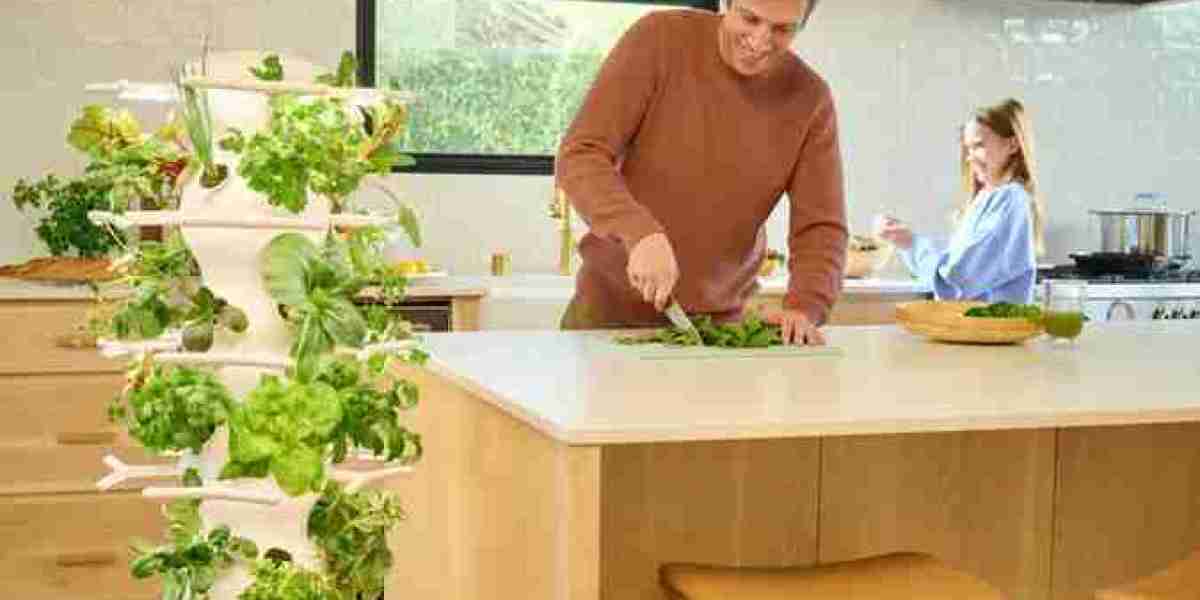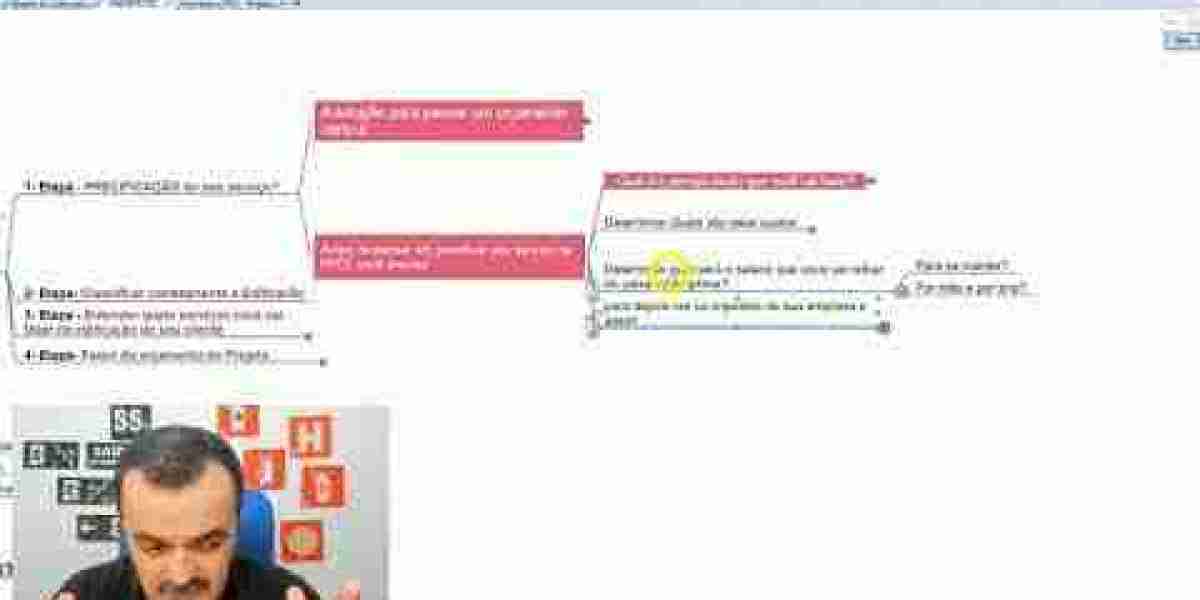Where do great business ideas come from? For entrepreneur Jacob Pechenik, the concept for his company sprouted from a seed of frustration. In simple terms, he wanted to find an affordable organic food resource for his family, and after digging around for options, he discovered that what he wanted didn't exist. And from that void, his business idea sprang to life. Literally.
Pechenik is the co-founder and CEO of Lettuce Grow, whose hydroponic gardening system, the Farmstand, allows people with little or no experience grow and harvest fresh organic produce in their homes or their backyards. The compact Farmstand (18.6" wide, 55" tall) has a capacity for 36 veggies, herbs and greens to grow at once. There's an indoor model outfitted with grow lights and an outdoor version as well — both are self-watering and self-fertilizing.
Most people are convinced they have a brown thumb," laughs Jacob. "But our system makes it incredibly easy to nurture your own food by sending you living seedlings. And once people start doing it, once they taste that fresh produce that they harvested with their own hands, they never want to stop."
Lettuce Grow sent me an indoor Farmstand Nook with a selection of seedlings to test out on my own. Previously, I had not been able to keep a houseplant alive for more than a week, so I was firmly in the "brown thumb" camp. But the stand's automated watering system and self-timed grow lights not only kept my vertical farm alive, but those seedlings thrived. I was shocked, to be honest, and awash in leafy greens before I knew it.
Plant maintenance was easy and as for assembling the Farmstand, I'd put it at an "IKEA coffee table" level of difficulty. There was some mild cursing when I realized I'd put some things together upside-down, but overall, it was fairly simple and felt like building a model airplane that I got to eat in the end. And now that my farm is up and running, as Pechenik predicted, I've become very fond of being able to stroll into my son's bedroom and snip a pile of mixed greens for lunch. (I don't know how thrilled my son will be when he gets home from college and finds a garden in his room, but that's another story.)
I spoke with Pechenik about the ideation, launch, and growth of Lettuce Grow to find out how to take an idea germinating in your noggin and create a product that people can actually buy. Whether or not you are looking to plant yourself into the food industry, I suggest reading on because Pechenik has a lot of great advice for any entrepreneur to harvest. (Okay, I'll stop with the farm puns now.)
From Wall Street to Farmer
"My life's been on a pretty twisty path. When I was living in New York, I built a weather derivatives trading platform. We did over a trillion dollars of weather trading. Eventually, I got tired of dealing with traders all the time and quit that cold turkey. I got into film finance, and in five years, financed and produced 35 films — which is like way too many! But on the 35th film I met Zooey [Deschanel], who is the mother of my kids. When she got pregnant, It made me really take like a hard look at what we were eating. I became very aware of all the GMOs and chemicals and pesticides in our food. That led me to organic foods, where I was just shocked at the prices. And so that started me on this farming path."
How the Concept Grew
"I started a farm in Austin, Texas to figure out how to grow organic produce as efficiently and at as low a cost as possible. And in that process, I learned how tough farming is — particularly the distribution piece. We'd take this beautiful organic head of lettuce, put it in a plastic clamshell, put that in a box and then put the box on a truck that went to a distribution center. And then it would get unloaded, sit there for a while, then get on another truck that would go to the grocery store. And so the end result is the product that's at the grocery store was not like the same products that we grew. It was seven days older. It didn't have the same feel, texture or flavor, and lost about 50 percent of its nutritional value. That's when a little light bulb went off. What if we somehow kept the plant alive the whole way?
Parallel to that, whenever we had friends come out to the farm, they fell in love with it. They wanted to bring their kids, they wanted to volunteer. Pulling a little plant out of the ground, wiping the dirt off and just eating it is this magical experience. So fast-forwarding a bit, we combined these two concepts — ultra-fresh food that you harvest yourself — Lettuce Grow. We founded it in 2017 and started shipping in 2019."
Having a vision but being open to change
"I was in Pennsylvania visiting potential manufacturers and I walked into what felt like the largest building I'd ever walked into and it was completely full of plastic fence posts. And then we went into another building that was equally full. It made me say, I don't want to do any virgin plastic when creating the Farmstand. I wanted to reuse materials and I wanted the components to be able to nest together to make shipping easier. So I had an engineering firm helping me with it in Austin and they built a prototype based on my design and…it was the ugliest thing I'd ever seen. It worked well, but I knew it wasn't going to become a movement unless it was beautiful. It needed to look like something people would be proud to display in their homes. So I met an industrial designer named Pip Tompkin. I said, "Here's my ugly design, can you make it look better?" About a month or two later, he came up with some designs that became our original farmstand."
Overcoming fear
"From the entrepreneur's side, you never know if you are ready to launch. And the truth is you never are. So you have to put that fear aside and go for it. You listen to reactions and iterate. From the customer side, one of our biggest challenges is also fear. Everyone thinks they are uniquely bad at gardening — that they have a brown thumb. I think it's in our DNA to not want to kill plants, so people are scared to death of it. Now, the most fear and anxiety-invoking aspect of growing is germinating the seeds. How far down do you push the seed down? Did I add enough water? Too much water? So we eliminated those stresses by mailing customers living seedlings. And to further ease anxiety, we let people grow with us for 90 days and they can return the product if they want. We have a one percent return rate, so the success level has been high."
Advice for budding entrepreneurs
"The most critical thing that you can do is surround yourself with the right people. Understand your strengths and weaknesses, be honest about what you do and find a few other people who are great at those things that you don't want to do. If you're an entrepreneur, you're probably a creative type. You might not necessarily be an accounting type. You want people who have a different way of looking at things. I want my ops person's always going to tell me what's wrong and what they want changed. I might not listen to them in the end, but I want to know other points of view. And technology-wise, don't reinvent the wheel, use existing tools that are out there. I want to be building growing systems, not shopping cart functionality."



